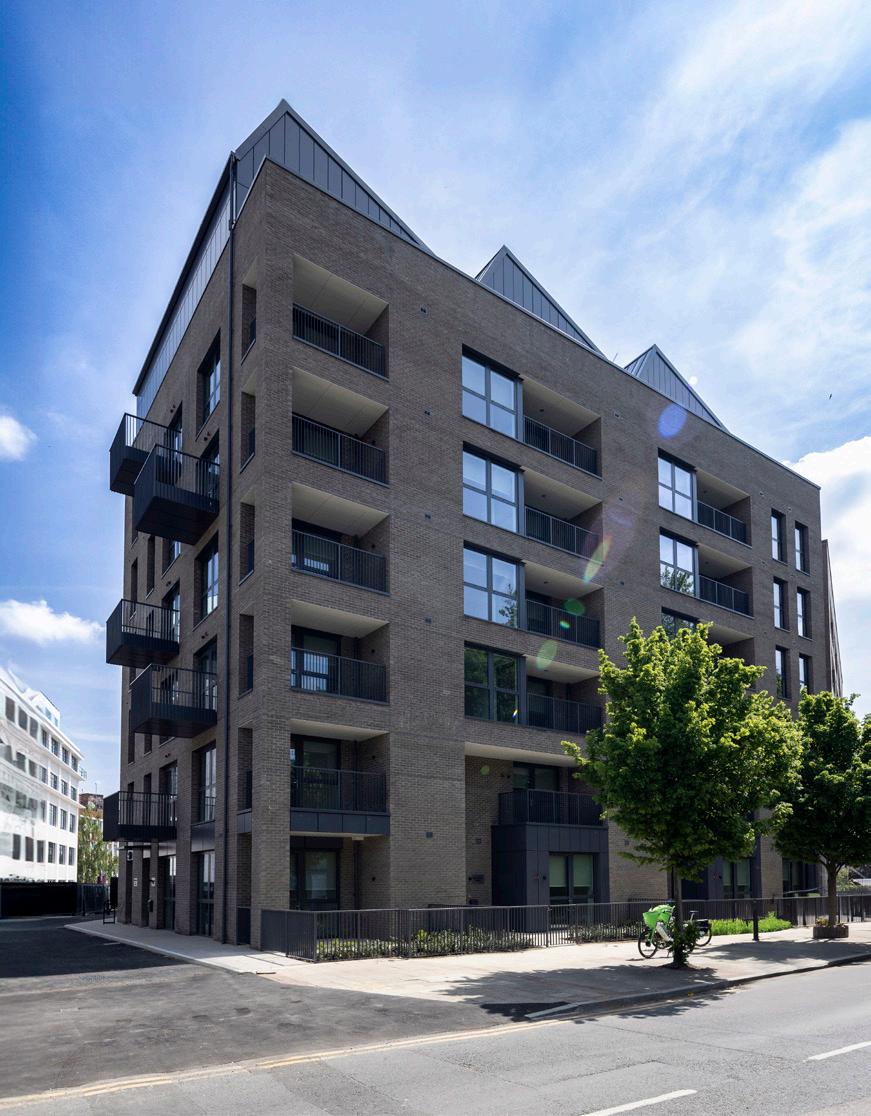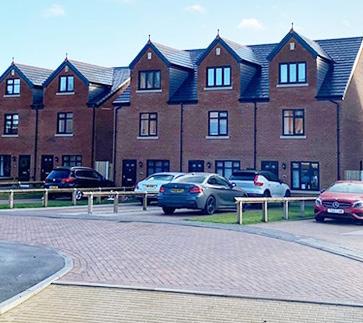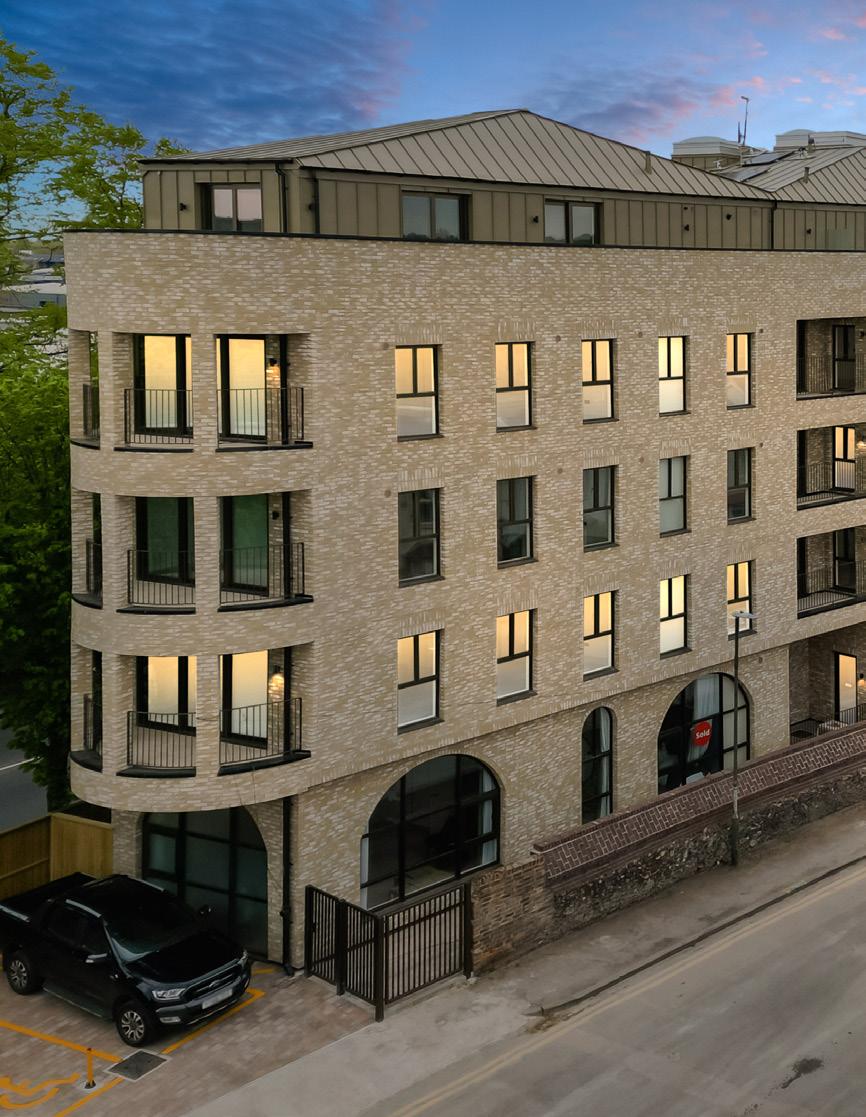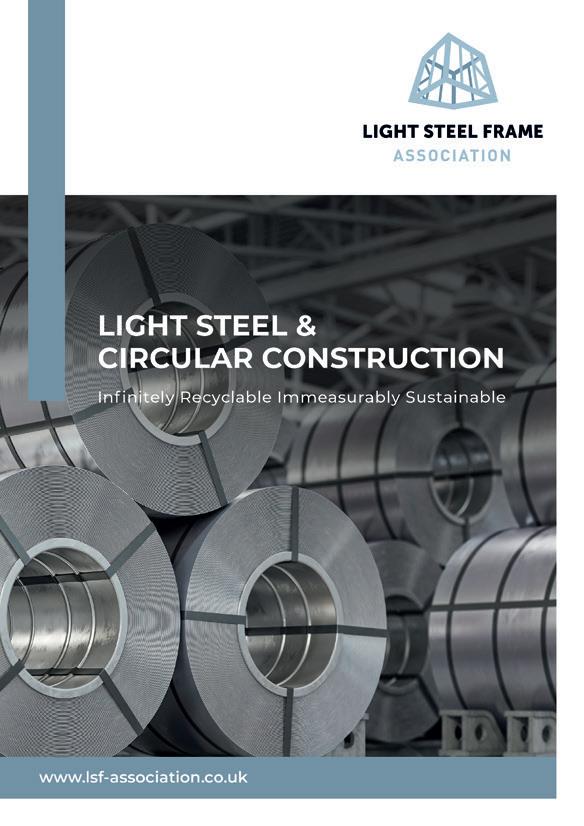






As we enter a new era of building safety, the LSFA examines the benefits light steel frame can bring to the residential sector as the new Labour government resets housebuilding targets.
Councils and Local Authorities in England have new mandatory housing targets to pave the way to deliver 1.5 million more homes over the next five years. Under the previous administration, targets were relegated to ambitions in the final years of government. Now they are being reinstated as mandatory and to make up the shortfall in the first year, the objective is to build 370,000 homes year on year over the lifetime of the parliament.
Behind bold ambitions, robust plans are required to get the proverbial ‘ducks in a row’ – from planning and finance reforms to grants and a commitment to improve living standards. But critically to ‘get Britain building again’ Councils and Local Authorities must ensure they have a complete and compliant supply chain in place to deliver sustainable homes at scale that will stand the test of time.
With its powerful combination of safety, strength and affordability, light steel framing technology is a cost-effective option for residential construction projects. As a material it is safe and sustainable, as it is lightweight, airtight and durable. Low carbon – and in future NO carbon steel – will make steel the lowest carbon structural building product available.
Delivering the requirements of the Building Safety Act and the Future Homes Standard, light steel has a massive part to play in delivering the challenging new housing targets.
Ben Towe Chair of the Light Steel Frame Association
(LSFA)

The new government has also committed to ensuring that the new homes are of highquality, well designed and ultimately safe. To build at scale, low, medium and high-rise schemes must be part of the residential mix. With loadbearing and infill options, light steel framing technology has systems suitable for all building heights.

Steel frames are especially well-suited for meeting the rigorous requirements of the Buildings Safety Act.
Fire safety during construction and when the building is in use is a significant issue with some forms of construction. According to our technical partner, the Steel Construction Institute (SCI) – the key benefits of light steel construction in relation to fire safety are:
• Light steel framing is non-combustible and does not contribute to potential fire load of buildings.
• Constructing the main frame of buildings using light steel framing supports the significant reduction and use of combustible materials when comparing to other forms of construction.
• Light steel framing systems, with inclusion of required building materials to form systems can achieve fire resistance period of up to 120 minutes REI or EI.
• Steel connections are robust in fire scenarios.
• No welding is required during installation vastly reducing the risk of fire during construction.
For more information, download our Building Safety Bulletin here: www.lsf-association.co.uk/library


Fire performance must be up there at the top of the list of priorities when specifying materials. Currently, it is estimated that only a third of all construction products in manufacture are covered by the Building Safety Regulator, leaving around 20,000 to 30,000 unregulated products.
SCI and industry partners from the Light Steel Forum have carried out a series of fire tests on loadbearing light steel framed walls subject to fire from both sides.
A series of ad-hoc two-sided fire tests were conducted, SCI analysed the results and performed thermal finite element analysis to develop a suitable design method for this specific situation.
The resulting design method is described in detail in the new SCI publication P442. The method requires single-sided fire test data for the wall and calibrated numerical thermal modelling to determine the temperatures of the light steel sections when the wall is exposed to fire on two sides.
The new publication is a supplement to existing SCI document P424 (2021) which provides comprehensive design guidance on the more general topic of fire resistance of light steel framing and is available to purchase via www.steel-sci.com

Compared to heavier forms of construction, steel framing offers significant advantages both economically and structurally. Not only are frames lighter allowing for easier transportation and installation onsite, but within the context of the whole building cost, the price point is also lower making light steel an economic option.
• Metal components are designed to be extremely tough and stable, meaning they can withstand high loads with minimal deformation over time reducing inspection and maintenance costs.
• Achieving greater economic benefits than timber or concrete, the frame assembles quickly and easily onsite which reduces labour costs significantly.
• A major advantage of light steel framing is its strength-to-weight ratio, reducing concrete foundation requirements, cutting carbon and lowering costs.
• In inner city areas with complex underground infrastructures, lighter weight equates to additional storeys, delivering a better return on investment for developers.

Many light steel frame buildings are BOPAS certified for a design life of 60 years. But according to SCI, design life predictions for light steel in a ‘warm frame’ environment is in excess of 250 years. DOWNLOAD OUR VALIDATION GUIDE HERE: www.lsf-association.co.uk/library/validation-guide-for-light-steel-frame-construction

Construction finance can be expensive and whilst the Bank of England interest rate cut was welcome, the building programme duration is critical to costs. It is the speed of construction delivered using steel framed panels or modules that can dramatically decrease the programme schedule. Reducing the borrowing period can dramatically cut the interest paid and total project costs.
When compared to traditional brick and block forms of construction light steel framing provides considerable benefits in terms of speed of construction. For typical sites, construction can be 30 to 50% faster which will produce savings on contract preliminaries.

Site waste is virtually eliminated by the use of prefabricated light steel frame...
Offering vast savings on disposal costs, site waste is virtually eliminated by the use of prefabricated light steel and modular components when compared to the industry average wastage of 10% in construction materials.
Rapid installation and a rapid dry envelope allows other activities to proceed much earlier in the building schedule. This means that property sales or lettings can commence approximately 30% faster. Not only delivering an earlier return on capital but giving the fastest possible access to much needed new homes.
Due to its high tensile strength, light steel frame is renowned for being reliable, durable, and efficient – providing superior dimensional stability with a better strength-to-weight ratio than concrete
• Light steel does not shrink or expand due to changes in humidity and temperature levels
• Light steel requires less maintenance as systems do not need painting or staining
• Light steel is lighter but still provides more robust structural support for larger buildings
• Light steel offers superior soundproofing capabilities as steel absorbs sound much better
Light steel has far greater strength than timber framing when it comes to resisting movement due to wind loads or seismic activity. These qualities make it an excellent choice for projects where safety and performance are top priorities. When comparing the two materials, light steel offers several advantages over timber framing: DOWNLOAD OUR SPECIFICATION AND ENGINEERING GUIDE HERE:

www.lsf-association.co.uk/library/lsfaspecification-and-engineering-guide
In addition to being strong and economical, light steel frames also provide excellent thermal insulation properties as thermal bridging is eliminated during the design process delivering excellent standards of building performance.
This means that heat transfer from outside sources is kept at a minimum while internal temperatures remain constant throughout different seasons –an important benefit to avoid overheating as temperatures rise during the summer months. The frames have exceptional acoustic performance which makes them suitable for use in areas where noise pollution needs to be reduced or removed altogether.


Safety does not have to come at the expense of sustainability – with light steel framing technology, housing developers can achieve both. Low carbon – and in future NO carbon steel – will make steel the lowest carbon structural building product available. In addition to being low carbon, strong and economical, light steel frame systems also provide excellent thermal insulation properties due to their airtight nature – reducing in-use energy requirements for tenants and home owners for the lifetime of the building


Light steel provides many environmental benefits. Its low weight facilitates easy transport, reduces foundation requirements and prefabrication means it is quick to assemble on site.
• Cold rolled steel components are manufactured to length, the swarf and offcuts produced which are minimal, can be recycled so there is no production waste
• With design life predictions for light steel in a ‘warm frame’ environment in excess of 250 years, light steel structures provide greater durability over time, delivering lower long-term costs associated with maintenance and repairs
• Light steel’s properties make it the ultimate sustainable construction solution in terms of its longevity, superior in-use performance and its ability to be recycled and reused. But most importantly – enhancing the quality and sustainability credentials of new homes
DOWNLOAD OUR SUSTAINABILITY GUIDE HERE: www.lsf-association.co.uk/library/lsfa-sustainability-guide

The light steel industry plays a vital role in achieving a circular economy, reducing the burden on nature by ensuring resources remain in use as long as possible. Steel has a unique characteristic as it can be reused and recycled repeatedly without losing its qualities as a building material. The constructional steelwork used in the UK contains an average of 60% recycled content.

Research carried out by the LSFA’s technical partner, the Steel Construction Institute estimates that there are around 100 million tonnes of steel in buildings and infrastructure in the UK. This ‘stock’ of steel is an important and valuable material asset that means we are largely selfsufficient in steel and can virtually produce all we need through recycling or reusing our latent stock to satisfy future market demand.
Steel is central to transitioning away from a linear approach - take, make, dispose, to circular construction - reduce, reuse, recycle, repeat and offers significant opportunities to mitigate the adverse impact on our environment. We need to adopt innovative approaches that design out waste, use resources more efficiently and keep materials and assets in use for as long as possible to retain their value by re-thinking the way that we design our homes and buildings.
DOWNLOAD OUR CIRCULAR CONSTRUCTION GUIDE HERE:
www.lsf-association.co.uk/library/ light-steel-and-circular-construction



An economic and versatile form of construction for residential buildings. Light steel frame is trusted and widely specified by the UK construction industry. Sector specialists have developed infill, panelised and modular solutions that deliver high quality homes on fast-track construction programmes. There is a well-established design, engineering, manufacturing and installation infrastructure, which is well covered by the latest building standards and certifications.

As innovators in light steel systems, leading manufacturers within our membership want to inspire construction professionals to develop residential schemes that are safe, meeting the rigorous requirements of the recent Building Safety Act and highly sustainable to achieve the Future Home Standards.
Bringing together a wealth of experience and technical know-how, the LSFA membership represents manufacturers, installers, industry supply chains, architects, engineers, consultants and clients operating in the light steel sector.
TO FIND A SPECIALIST IN LIGHT STEEL FRAME CONSTRUCTION GO TO:
www.lsf-association.co.uk/members
info@lsf-association.co.uk
01743 290 030
LSF_Association
Light Steel Frame Association
www.lsf-association.co.uk
